Main Body
Chapter 1. An Introduction to Sociology

Learning Objectives
- Explain the concepts central to sociology.
- Describe the different levels of analysis in sociology: micro-level sociology, macro-level sociology, and global-level sociology.
- Define the sociological imagination.
- Explain why sociology emerged when it did.
- Describe the central ideas of the founders of sociology.
- Explain what sociological theories and paradigms are and how they are used.
- Describe sociology as a multi-perspectival social science divided into positivist, interpretive and critical paradigms.
- Define the similarities and differences between quantitative sociology, structural functionalism, historical materialism, feminism, and symbolic interactionism.
- Explain why it is worthwhile to study sociology.
- Identify ways sociology is applied in the real world.
Introduction to Sociology
Concerts, sporting matches and games, and political rallies can have very large crowds. When you attend one of these events you may know only the people you came with, yet you may experience a feeling of connection to the group. You are one of the crowd. You cheer and applaud when everyone else does. You boo and yell alongside them. You move out of the way when someone needs to get by, and you say “excuse me” when you need to leave. You know how to behave in this kind of crowd.
It can be a very different experience if you are travelling in a foreign country and you find yourself in a crowd moving down the street. You may have trouble figuring out what is happening. Is the crowd just the usual morning rush, or is it a political protest of some kind? Perhaps there was some sort of accident or disaster. Is it safe in this crowd, or should you try to extract yourself? How can you find out what is going on? Although you are in it, you may not feel like you are part of this crowd. You may not know what to do or how to behave.
Even within one type of crowd, different groups exist and different behaviours are on display. At a rock concert, for example, some may enjoy singing along, others may prefer to sit and observe, while still others may join in a mosh pit or try crowd-surfing. On February 28, 2010, Sydney Crosby scored the winning goal against the United States team in the gold medal hockey game at the Vancouver Winter Olympics. Two hundred thousand jubilant people filled the streets of downtown Vancouver to celebrate and cap off two weeks of uncharacteristically vibrant, joyful street life in Vancouver. Just over a year later, on June 15, 2011, the Vancouver Canucks lost the seventh hockey game of the Stanley Cup finals against the Boston Bruins. One hundred thousand people had been watching the game on outdoor screens. Eventually 155,000 people filled the downtown streets. Rioting and looting led to hundreds of injuries, burnt cars, trashed storefronts and property damage totaling an estimated $4.2 million. Why was the crowd response to the two events so different?

A key insight of sociology is that the simple fact of being in a group changes your behaviour. The group is a phenomenon that is more than the sum of its parts. Why do we feel and act differently in different types of social situations? Why might people of a single group exhibit different behaviours in the same situation? Why might people acting similarly not feel connected to others exhibiting the same behaviour? These are some of the many questions sociologists ask as they study people and societies.
1.1. What Is Sociology?

A rather standard definition of sociology might note that sociology is the systematic study of society and social interaction. But what does this really tell us? It seems the object of study is something called “society and social interaction” and that sociologists study this in a “systematic”, or as we will later argue, a ‘scientific’ way.
While a useful start, we will soon see that understanding what sociology is and what sociologists do is rather complex. While most of us have an understanding of the world rooted in our individual life history and the views of those we are closest to, taking a sociological perspective often reveals a very different, broader and more complex idea of social life and our place in it. Sociological investigation reveals how as members of a society we both shape and are shaped by the social world we inhabit. A sociological perspective, by examining the way society is organised, allows us to make connections between the everyday life of individuals and structure of opportunities and problems in society. Moreover, by focusing on historical trends and developments and by comparing societies across the globe, sociology demonstrates that there is nothing inevitable about the present ways of doing things – that social change is possible.
Are you still a bit confused? Don’t worry, the goal of an introductory course in sociology is to thoroughly explain what sociology is and why it is important. In the following pages you will encounter many well-known sociologists and their findings about how the social world operates and the theories and concepts sociologists use. Sociology however, is not just for sociologists. Taking a sociological perspective can help each and every one of us in our jobs, as members of families and neighbours navigate a complex world.
What are Society and Culture? Micro, Macro and Global Perspectives
Sociologists study all aspects and levels of society. A society is a group of people whose members interact, reside in a definable area, and share a culture. A culture includes the group’s shared practices, values, beliefs, norms, and artifacts. One sociologist might analyze people as they carry on everyday conversations to study how the rules of polite conversation differ by social class or cultural group. Another sociologist might study how a shift to working from home changes the way organizations are run. Yet another sociologist might study how access to daycare affects the national poverty rate. A fourth sociologist might study how the increasing economic importance of China, India and Brazil has altered the politics and economics of African nations.
These examples illustrate the ways in which society and culture can be studied at different levels of analysis, from the detailed study of face-to-face interactions to the examination of large-scale historical processes affecting entire civilizations. As discussed in later chapters, sociologists break the study of society down into four separate levels of analysis: micro, meso, macro, and global. The basic distinctions, however, are between micro-level sociology, macro-level sociology and global-level sociology.
The study of cultural rules of politeness in conversation is an example of micro-level sociology. At the micro-level of analysis, the focus is on the social dynamics of intimate, face-to-face interactions. Research is conducted with a specific set of individuals such as conversational partners, family members, work associates, or friendship groups. Other examples of micro-level research include the study of how informal mentorship helps or hinders advancement of women in high tech startups, or how loyalty to criminal gangs is established.
Macro-level sociology focuses on the properties of large-scale, society-wide phenomenon that extend beyond individual interaction. The example above of the influence of child care policies on poverty rates is a macro-level phenomenon. A sociologist might study how access to public childcare has a different effect on families depending on their income, their place of residence (rural or urban), their family type (single or two-parent), or their ethnic and racial background. Other examples of macro-level research include examining which racial and ethnic groups are under-represented in positions of power in society, or why fundamentalist Christian religious movements play a more prominent role in American politics than they do in Canadian politics. In each case, the site of the analysis shifts away from the nuances and detail of micro-level interpersonal life to the broader, macro-level systematic patterns in society.
In global-level sociology, the focus is on structures and processes that extend beyond the boundaries of states or specific societies. As Ulrich Beck (2000) has pointed out, in many respects we no longer “live and act in the self-enclosed spaces of national states and their respective national societies.” Issues of climate change, pandemics, the introduction of new technologies and popular culture increasingly by-pass traditional borders. With the boom and bust of petroleum or other export commodity economies, it is clear to someone living in Fort McMurray, Alberta, that their daily life is affected by global markets that determine the price of oil, the global flows of capital investment and increasingly the global response to a building climate emergency.
The relationship between the micro, macro, and global remains one of the key conceptual problems confronting sociology. What is the relationship between an individual’s life and social life at the national and global level? On the one hand, macro-level phenomena like class structures, racial inequality, health care systems, and gender roles and urbanization clearly affect our everyday lives. When our health care system cannot provide necessary services we may die prematurely, gender stereotypes make it difficult for us to enter certain types of work, and transportation systems in cities might make our commutes long and unhealthy (stuck in a car in traffic) or short and active (a brisk walk to school). On the other hand, these macro-level phenomenon do not explain the specific nuances of everyday interaction very well. They do not explain how strangers interact on the bus, how we navigate cliques in school, or how everyday racism is expressed and affects us in the streets. Macro-level structures constrain the daily interactions of the intimate circles in which we move, but they are also filtered through localized perceptions and “lived” in a myriad of inventive and unpredictable ways.
The Sociological Imagination
While we will learn that there are many different ‘kinds’ of sociology and many different methods that sociologists use, sociologists all have something in common. Each of them looks at society using what C. Wright Mills (1916-1962) called the sociological imagination, sometimes also referred to as the “sociological lens” or “sociological perspective.” Mills defined a sociological imagination as the capacity to see an individual’s private troubles in the context of the broader social processes that structure them. This enables the sociologist to examine what Mills called “personal troubles of milieu” as “public issues of social structure,” and vice versa.
Mills reasoned that private troubles like being overweight, being unemployed, having marital difficulties, or feeling purposeless or depressed appear to most people as purely personal in nature. When faced with such troubles we tend to focus on how they are unique to our personal selves, our psychological circumstance, or our moral character: “I have an addictive personality;” “I didn’t get the right education,” “My husband is unsupportive,” etc. However, if private troubles are widely shared with others, they indicate that there is a common social problem that has its source in the way social life is structured. At this level, the issues are not adequately understood as simply private troubles. They are best addressed as public issues that require a collective response to resolve.
Obesity, for example, has been increasingly recognized as a growing problem for both children and adults in North America. Michael Pollan cites statistics that three out of five Americans are overweight and one out of five is obese (2006). In Canada in 2012, just under one in five adults (18.4%) were obese, up from 16% of men and 14.5% of women in 2003 (Statistics Canada, 2013). Because the rate of obesity has changed over time we know it is is not simply a private concern related to individual genetics, medical issues, dietary practices, or exercise habits. This change in the incidence of obesity can only be accounted for by changing social conditions that that puts people at risk for chronic diseases like hypertension, diabetes, and cardiovascular disease and creates significant costs for the medical system. Rather than simply a personal trouble, obesity is also a social issue.
What are the social changes that can account for changing obesity rates? Polan is particularly interested in the role of the industrialization of the food chain, which since the 1970s has produced increasingly cheap and abundant food with significantly more calories due to processing. Cheap ingredients from industrial farms like corn syrup and mass produced potatoes and beef, led to the trend of super-sized fast foods and soft drinks in the 1980s. As Pollan argues, trying to find a processed food in the supermarket without a cheap, calorie-rich, corn-based sugar additive is a challenge. Pollan also agrees with health researchers and urban planners such as the University of British Columbia’s, Lawrence Frank that obesity rates are, in part, a product of the increasingly sedentary and stressful lifestyles of modern, capitalist society. These academics argue that obesity, like many of the pressing health issues, is influenced by the type and amount of work we do,and the way our cities and neighbourhoods are organized. Others would note that gender stereotypes and racial and economic inequalities place some people more at risk than others.
The sociological imagination in this example is the capacity to see the connection between the private trouble of being overweight and the social issues of the industrialization of the food chain, the profit motive of fast food restaurants, social norms about the types of food we eat, the transportation we use and to the way that some social groups have better access to healthy food and exercise. A sociological imagination allows us to see the social arrangements and contexts that influence behaviour, attitudes, and culture. By applying systematic and scientific methods to this process, they try to do so without letting their own biases and preconceived ideas influence their conclusions.
Studying Patterns: How Sociologists View Society
To a sociologist, the personal decisions an individual makes do not exist in a vacuum. Cultural patterns and social forces put pressure on people to select one choice over another. Sociologists try to identify these general patterns by examining the behaviour of large groups of people living in the same society and experiencing the same societal pressures. When general patterns persist through time and become routine forms of micro-level (interpersonal) interaction, or institutionalized at macro or global levels of interaction (i.e. into class structures, legal systems, or economic activities), they are referred to as social structures.
A key basis of the sociological perspective is the concept that the individual and society are inseparable. It is impossible to study one without the other. German sociologist Norbert Elias (1887-1990) called the process of simultaneously analyzing the behaviour of individuals and the society that shapes that behaviour figuration. He described it through a metaphor of dancing. There can be no dance without the dancers, but there can be no dancers without the dance. Without the dancers, a dance is just an idea about motions in a choreographer’s head. Without a dance, there is just a group of people moving around a floor. Similarly, there is no society without the individuals that make it up, and there are also no individuals who are not affected by the society in which they live (Elias, 1978).
One problem for sociologists is that such a perspective is often discouraged by the moral framework of the contemporary capitalist societies we live in. Such societies emphasize the importance of individual responsibility and individual choice. This moral framework insists that the individual is responsible for their behaviours and decisions and suggests that explanations of behaviour that address social context are “letting the individual off the hook” for their actions. Talking about the social roots of individual problems is seen to be morally soft or lenient.
Sociology, as a social science, remains neutral on these types of moral questions. For sociologists, the individual and society relationship is complex and needs to be examined through evidence-based, rather than morality-based, research. Sociology encourages us to acknowledge that our behaviours and decisions are shaped by the society and social groups we belong to while also acknowledging that within these contexts we do make individual decisions and endure the consequences of these decisions. Our lives are profoundly shaped by our social context and through living our lives we come to influence, change or reinforce these social arrangements. In the end, a society is nothing but the ongoing social relationships and activities of specific individuals, but we are never entirely free of our social ties.
Making Connections: Sociology in the Real World
The Individual in Society: Choices of Aboriginal Gang Members

In 2010 the CBC program The Current aired a report about several young Aboriginal men who were serving time in prison in Saskatchewan for gang-related activities (CBC, 2010). They all expressed desires to be able to deal with their drug addiction issues, return to their families, and assume their responsibilities when their sentences were complete. They wanted to have their own places with nice things in them. However, according to the CBC report, 80% of the prison population in the Saskatchewan Correctional Centre were Aboriginal and 20% of those were gang members. This is consistent with national statistics on Aboriginal incarceration which showed that in 2010–2011, the Aboriginal incarceration rate was 10 times higher than for the non-Aboriginal population. While Aboriginal people account for about 4% of the Canadian population, in 2020 they made up 30% of the federal penitentiary population. In 2001 they made up only 17% of the penitentiary population. Aboriginal overrepresentation in prisons has continued to grow substantially (Office of the Correctional Investigator, 2013).
The outcomes of Aboriginal incarceration are also bleak. The federal Office of the Correctional Investigator summarized the situation as follows. Aboriginal inmates are:
- Routinely classified as higher risk and higher need in categories such as employment, community reintegration, and family supports.
- Released later in their sentence (lower parole grant rates); most leave prison at Statutory Release or Warrant Expiry dates.
- Overrepresented in segregation and maximum security populations.
- Disproportionately involved in use-of-force interventions and incidents of prison self-injury.
- More likely to return to prison on revocation of parole, often for administrative reasons, not criminal violations (2013).
The federal report notes that “the high rate of incarceration for Aboriginal peoples has been linked to systemic discrimination and attitudes based on racial or cultural prejudice, as well as economic and social disadvantage, substance abuse, and intergenerational loss, violence and trauma” (2013).
This is clearly a case in which the situation of the incarcerated inmates interviewed on the CBC program has been structured by historical social patterns and power relationships that confront Aboriginal people in Canada generally. How do we understand it at the individual level, however — at the level of personal decision making and individual responsibilities? One young inmate described how, at the age of 13, he began to hang around with his cousins who were part of a gang. He had not grown up with “the best life”; he had family members suffering from addiction issues and traumas. The appeal of what appeared as a fast and exciting lifestyle — the sense of freedom and of being able to make one’s own life, instead of enduring poverty — was compelling. He began to earn money by “running dope” but also began to develop addictions. He was expelled from school for recruiting gang members. The only job he ever had was selling drugs. The circumstances in which he and the other inmates had entered the gang life, and the difficulties getting out of it they knew awaited them when they left prison, reflect a set of decision-making parameters fundamentally different than those facing most non-Aboriginal people in Canada.
1.2. The History of Sociology
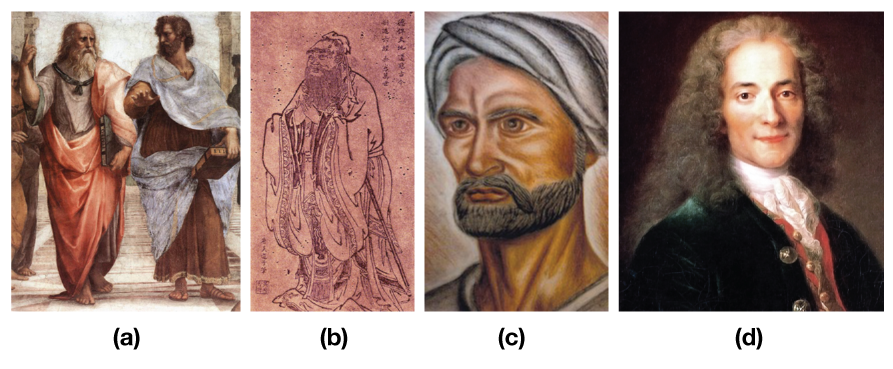
Since ancient times, people have been fascinated by the relationship between individuals and the societies to which they belong. The ancient Greeks might be said to have provided the foundations of sociology through the distinction they drew between physis (nature) and nomos (law or custom). The modern sociological term “norm” (i.e., a social rule that regulates human behaviour) comes from the Greek term nomos. Histories by Herodotus (484–425 BCE) was a proto-anthropological work that described the great variations in the nomos of different ancient societies around the Mediterranean, indicating that human social life was not a product of nature but a product of human creation. In the 13th century, Ma Tuan-Lin, a Chinese historian, first recognized social dynamics as an underlying component of historical development in his seminal encyclopedia, General Study of Literary Remains. The study charted the historical development of Chinese state administration from antiquity in a manner very similar to contemporary institutional analyses.
However, it was not until the 19th century that the basis of the modern discipline of sociology can be said to have been truly established. The ideas that culminated in sociology can be found in the three major transformations that came to define modern society: the development of science from the 16th century onward, the emergence of democratic forms of government with the American and French Revolutions (1775–1783 and 1789–1799 respectively), and the Industrial Revolution beginning in the 18th century. This was a time of great hope in a scientific understanding of world through systematic observation, of popular uprisings that upended forms of governance based on claims of divine inheritance, and of unprecedented social problems, from the breakdown of local communities to the hyper-exploitation of industrial labourers.
Early sociologists like Comte and Marx sought to formulate a rational, evidence-based, scientific explanation of this tumultuous time. While Comte hoped to restore order and Marx sought to provide the basis for a revolutionary transformation, each argued that sociology, by providing a rational and scientifically comprehensive knowledge of society and its processes, could help build a better world. This is why to the day sociology can be understood as a fundamentally hopeful endeavour.

August Comte: The Father of Sociology
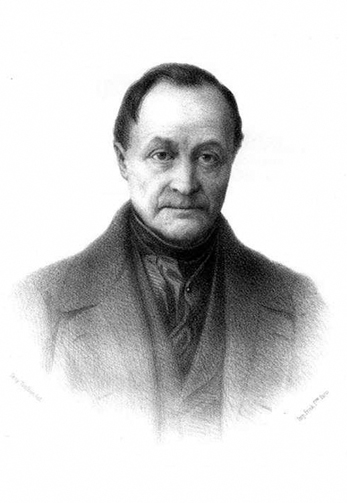
The term sociology was first coined in 1780 by the French essayist Emmanuel-Joseph Sieyès (1748–1836) and in 1838, the term was reinvented by Auguste Comte (1798–1857). Comte believed that societies and human behaviour were best understood using the same scientific methods used to study the natural world. He also believed in the potential of social scientists to work toward the betterment of society and coined the slogan “order and progress” to argue that the opposing progressive and conservative factions that marked post-revolutionary French society could be united. Comte proposed that science would be the means to create a rational social order where each social group could find their place in a hierarchical social order. It is a testament to his influence in the 19th century that the phrase “order and progress” adorns the Brazilian coat of arms (Collins and Makowsky, 1989).
Comte named the scientific study of social patterns positivism. He believed that using scientific methods to reveal the laws by which societies and individuals interact would usher in a new “positivist” age of history. In principle, positivism, or what Comte called “social physics,” proposed that the study of society could be conducted in the same way that the natural sciences approach the natural world.
Karl Marx: The Ruthless Critique of Everything Existing
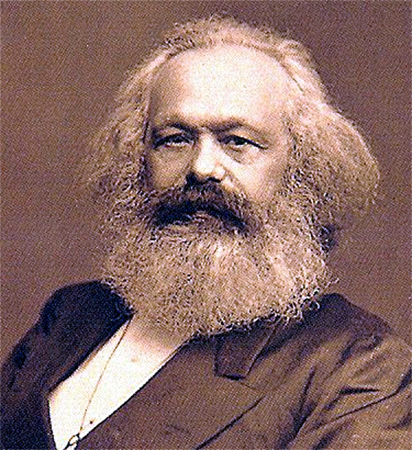
Karl Marx (1818–1883) was a German philosopher and economist but not in the way that most of the time or today would conceive of this. Marx is best known for his critical analysis of capitalist economies and as a revolutionary who, along with his lifelong collaborator, Friedrich Engels (1820–1895) co-authored the Communist Manifesto — one of the most influential political manuscripts in history.
Although Marx never called his analysis “sociology”, much of Marx’s work contained the hallmarks of a sociological imagination. Marx was driven to connect the ‘private troubles’ he and Engels saw around him with the ‘social issues’ of the capitalist economic system that had come to prominence in Europe. His goal was a scientific analysis of society rooted in objective data and understanding and support of struggles for social justice. This work is foundational for contemporary critical sociology that seeks to use a rigorous scientific analysis of society as a basis to change it.
Marx developed a sophisticated political economy that revealed the social relationships, and inequalities, built into capitalist economies. Capitalism, Marx argued, is a class system where the ownership of the “means of production”, the factories, raw materials and tools used in production, gave the ‘bourgeoisie’ not only economic but political and cultural power. Marx described capitalism as inherently dynamic, and driven to technological change and globalization upending all other forms of production and continually reinventing itself and the products it creates.
The conditions of work under capitalism was a driving concern for Marx. He coined the term ‘alienation’ to describe how it was owners that got to decide what, when and how to produce and that at the end of the day the products of workers labour were sold for a profit that owners got to keep. Increasingly work was highly specialized and workers became lowly-paid, appendages to the machines they kept. It is important to remember that Capitalists didn’t lower wages or degrade workers because they were mean or cruel, they were simply following their interests in creating profit.
Finally, Marx sought to understand the potential and source of social change to a form of production and society that might better meet the needs and better develop the potential of all. Marx saw the tensions of capitalism where a small minority grew wealthy at the expense of the masses as ripe for revolutionary change and that movements of alienated workers were likely to be the drivers of this change. This is the least developed aspect of Marx’s writings and he said little about real word “communism” or “socialism” that political movements established in his name afterwards. From the Manifesto and other writings, we can say that Marx envisioned a society where the tremendous technological abilities developed under Capitalism could be redirected from the production of commodities for profit to the well-being of all.
Harriet Martineau: The First Woman Sociologist?
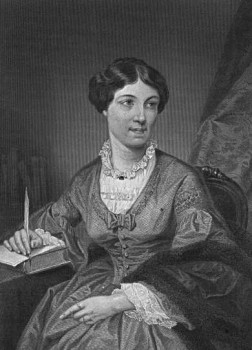
Harriet Martineau (1802–1876) was one of the first women sociologists in the 19th century. There are a number of other women who might compete with her for the title of the first woman sociologist, such as Catherine Macaulay, Mary Wollstonecraft, Flora Tristan, and Beatrice Webb, but Martineau’s specifically sociological credentials are strong. She was for a long time known principally for her English translation of Comte’s Course in Positive Philosophy, but she also created a body of her own work in the tradition of the great social reform movements of the 19th century. Martineau introduced a sorely missing woman’s perspective and tackled issues such as domestic life, children and race relations that her male colleagues neglected. In so doing, Martineau and became a founder of a feminist sociology that shares with critical sociology the view that rigorous social science can, and should, be used to change society.
In two of her most famous sociological works: Society in America (1837) and Retrospect of Western Travel (1838), Martineau found the workings of capitalism at odds with the professed moral principles of people in the United States; she pointed out the faults with the free enterprise system in which workers were exploited and impoverished while business owners became wealthy. She further noted that the belief in all being created equal was inconsistent with the lack of women’s rights. Much like Mary Wollstonecraft, Martineau was often discounted in her own time by the male domination of academic sociology. In the critical tradition, however, she was not interested in merely developing sociology as a social science and actively worked with abolitionists on the social reform of slavery (Zeitlin, 1997), for social reform in the situation of women (the right to vote, have an education, pursue an occupation, and enjoy the same legal rights as men) and together with Florence Nightingale, she worked on the development of public health care, which led to early formulations of the welfare system in Britain (McDonald, 1998).
Émile Durkheim: The Pathologies of the Social Order
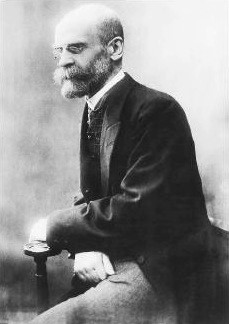
Émile Durkheim (1858–1917) helped establish sociology as a formal academic discipline by establishing the first European department of sociology at the University of Bordeaux in 1895, and by publishing his Rules of the Sociological Method in 1895. As in Comte’s time, France in the late 19th century was the site of major upheavals, sharp and often bloody political divisions and rapid social chainge. This undoubtedly led to the focus in Durkheim’s sociology on themes of moral anarchy, decadence, disunity, and disorganization. For Durkheim, sociology was a scientific but also a “moral calling” and one of the central tasks of the sociologist was to determine “the causes of the general temporary maladjustment being undergone by European societies and remedies which may relieve it” (1897/1951). In this respect, Durkheim represented the sociologist as a kind of medical doctor, studying social pathologies and proposing social remedies and cures. He saw healthy societies as stable, while pathological societies experienced a breakdown in social norms between individuals and society. He described this breakdown as a state of normlessness or anomie — a lack of norms that give clear direction and purpose to individual actions. As he put it, anomie was the result of “society’s insufficient presence in individuals” (1897/1951).
Key to Durkheim’s approach was the analysis of social facts and social functions. Social facts are societal phenomenon like law, custom, morality, religious rites, language, money, business practices, etc.. Each identifiable social fact could be analyzed with regard to its specific function in a society. Like a body in which each organ (heart, liver, brain, etc.) serves a particular function in maintaining the body’s life processes, a healthy society depends on particular functions or needs being met by particular social facts. Along with Compte and Herbert Spencer, Durkheim is said to be a founder of structural functionalism, also called functionalist sociology.
Making Connections: Sociology in the Real World
Durkheim and the Sociological Study of Suicide

Durkheim was very influential in defining the subject matter of the new discipline of sociology. For Durkheim, sociology was not about just any phenomena, it was not about the biological or psychological dynamics of human life, but about the external social facts through which the lives of individuals were constrained. Such a sociology explained how phenomenon that may seem deeply personal are influenced by the societal structures and cultural constraints of individual lives.
This is the framework of Durkheim’s famous study, Suicide: A Study in Sociology (1897/1997). Using statistics compiled by police and other state agencies across Europe, Durkheim observed that while there was no correlation between rates of suicide and rates of psychopathology, suicide rates did vary by social context. For example, suicide rates varied according to the religious affiliation of suicides. Protestants had higher rates of suicide than Catholics, even though both religions equally condemn suicide. In some jurisdictions Protestants killed themselves 300% more often than Catholics. Jews meanwhile were even less likely than Catholics to commit suicide.
Durkheim argued that the key factor that explained the difference in suicide rates were the different degrees of social integration of the different religious communities, measured by the degree of authority religious beliefs hold over individuals, and the amount of collective ritual observance and mutual involvement individuals engage in in religious practice. In short, the more a religion created shared experiences and beliefs that bound people together, the less likely members of that religion were to commit suicide.
Durkheim noted that Catholicism included shared, public ritual practice of the sacraments, such as confession and taking communion and fostered a strong adherence to religious authority. Protestants meanwhile were taught to take a critical attitude to religious authority and formal doctrine and shared ritual was reduced to a minimum. They were less integrated into their communities and more thrown back on their own resources. Protestants were more prone to what Durkheim termed egoistic suicide: suicide which results from individuals having to depend on themselves in the absence of strong social bonds tying them to a community. Suicide, Durkeim wrote, “varies inversely with the degree of integration of the social groups of which the individual forms a part” (Durkheim, 1897/1997).
Here the situation of Jews is instructive. It seems paradoxical that a group, which faced the significant discrimination and hardship of antisemitism would also have low suicide rates. Durkheim’s explanation was that, such threat, encourages unity and the creation strong intra-community ties, ties that protect individuals from violence, provide economic and cultural opportunity and coincidentally provide the social integration that reduces the risk of egoistic suicide. Durkheim’s study was sociological because he did not try to explain suicide rates in terms of individual psychopathology. Instead, he argued that “Suicide varies inversely with the degree of integration of the social groups of which the individual forms a part” (Durkheim, 1897/1997).
Durkheim looked at several other variables such as sex, nationality and marital status and while the passage of time, and the quality of the data available in his day, mean that we cannot simply rely on his findings directly, contemporary research into suicide in Canada shows that suicide rates continue to vary considerably by age, gender and marital status. Males are considerably more likely to commit suicide across all age groups. It is elderly men, however, that have the highest rate of suicide and this is followed by those in middle age. Those under 14 years of age and even those 15 to 19 years of age have lower rates of suicide than all other age groups. On the other hand, married people are the least likely group to commit suicide. Single, never-married people are 3.3 times more likely to commit suicide than married people, followed by widowed and divorced individuals respectively.
How do sociologists explain this? It is clear that early adulthood is a period in which social ties to family and society are strained. It is often a period in which young adults break away from their childhood roles in the family group and establish their independence by going off to college or university. Youth unemployment meanwhile is higher than for other age groups and, since the 1960s. These factors tend to decrease the quantity and the intensity of ties to society. Married people on the other hand have both strong affective affinities with their marriage partners and strong social expectations placed on them, especially if they have families: their roles are clear and the norms which guide them are well-defined. According to Durkheim’s proposition, suicide rates vary inversely with the degree of integration of social groups. Young adults are less integrated into society, which puts them at a higher risk for suicide than married people who are more integrated. It is interesting that the highest rates of suicide in Canada are for adults in midlife, aged 40-59. Midlife is also a time noted for crises of identity, but perhaps more significantly, as Navaneelan (2012) argues, suicide in this age group results from marital breakdown. This is also a time when children are leaving the household an act that leaves both child and parent with lessened social ties and commitments.
Max Weber: Verstehende Soziologie
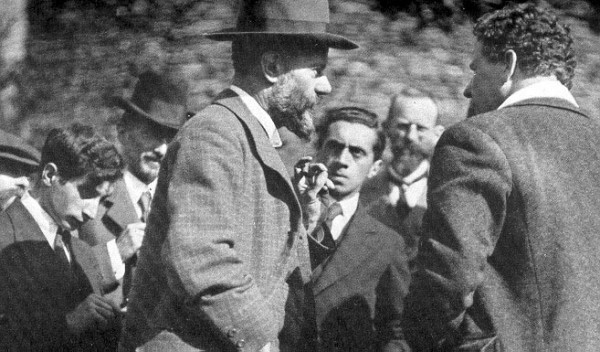
Prominent sociologist Max Weber (1864–1920) established a sociology department in Germany at the Ludwig Maximilians University of Munich in 1919 and was also a prominent public figure, playing an important role in the German peace delegation in Versailles and in drafting the ill-fated German (Weimar) constitution following the defeat of Germany in World War I.
Weber also made a major contribution to the methodology of sociological research. Weber believed that it was difficult if not impossible to apply natural science methods to accurately predict the behaviour of groups as positivist sociology hoped to do. What was distinct about human behaviour was that it could not be understood independently of the meanings that individuals attributed to it. A Martian’s analysis of the activities in a skateboard park would be hopelessly confused unless it understood that the skateboarders were motivated by the excitement of taking risks and the pleasure in developing skills. This insight into the meaningful nature of human behaviour even applied to the sociologists themselves, who, they believed, should be aware of how their own cultural biases could influence their research. To deal with this problem, Weber introduced the concept of Verstehen, a German word that means to understand from a subject’s point of view. In seeking Verstehen, outside observers of a social world — an entire culture or a small setting — attempt to understand it empathetically from an insider’s point of view. The actions of the young skateboarders can be explained because they hold the experienced boarders in esteem and attempt to emulate their skills, even if it means scraping their bodies on hard concrete from time to time.
Weber and other like-minded sociologists founded interpretive sociology whereby social researchers strive to find systematic means to interpret and describe the subjective meanings behind social processes, cultural norms, and societal values an approach later developed as symbolic interactionism or simply interactionism. This approach led to research methods like ethnography, participant observation, and phenomenological analysis. Their aim was not to generalize or predict (as in positivistic social science), but to systematically gain an in-depth understanding of social worlds. The natural sciences may be precise, but from the interpretive sociology point of view their methods confine them to study only the external characteristics of things.
1.3. Theoretical Perspectives

Sociologists study social events, interactions, and patterns of behaviour. They then develop theories to explain why these occur and what can result from them. In sociology, a theory is a way to explain patterns of social interaction and create testable propositions about society (Allan, 2006). For example, Durkheim’s proposition, that differences in suicide rate can be explained by differences in the degree of social integration in different communities, is a theory.
As this brief survey of the history of sociology suggests, there is considerable diversity in the theoretical approaches sociology takes to studying society. The variety of theories and methodologies makes for a rich and useful dialogue among sociologists. This diversity makes sense as, unlike the subject matter of natural sciences, societies are never simply a set of objective qualities like the chemical composition of gases, they are imbued with social meanings, historical contexts, political struggles, and human agency. Having multiple approaches to understanding society and social relationships makes sense given the subject matter of sociology.

Despite the differences that divide sociology into multiple perspectives and methodologies, its unifying aspect is the systematic and rigorous nature of its social inquiry. Sociology is based on the scientific research tradition which emphasizes two key components: empirical observation and the logical construction of theories and propositions. Science is understood here in the broad sense to mean the use of reasoned argument, the ability to see general patterns in particular incidences, and the reliance on evidence from systematic observation of social reality. However, as noted above, the outcome of sociological research will differ depending on the sociological approach and theoretical and methodological tools being used. Each of the blind men studying the elephant in the illustration above are capable of producing an empirically true and logically consistent account of the elephant, albeit limited, which will differ from the accounts produced by the others. While the analogy that society is like an elephant is tenuous at best, it does exemplify the way that different schools of sociology can explain the same factual reality in different ways
Sociology can be divided into three broad paradigms of sociological thinking: structural functionalism (also ‘functionalism’), critical sociology (sometimes called a ‘conflict’ theory) which encompasses Marxist, feminist, intersectional sociology as well as queer theory and much environmental sociology and symbolic interactionism (or interactionism or interpretive sociology). Each of these perspectives of paradigms comes with its own strengths, limitations, and practical purposes: functionalism focuses on generating types of knowledge useful for controlling or administering social life. interpretive sociology on types of knowledge useful for promoting greater mutual understanding and consensus among members of society, and critical sociology on types of knowledge useful for changing and improving the world, for emancipating people from conditions of servitude. Within these three types of sociological knowledge, we will discuss four paradigms of sociological thinking: structural functionalism, historical materialism, feminism, and symbolic interactionism.
Structural Functionalism: a positivist approach
Structural Functionalism falls within the positivist tradition in sociology due to Durkheim’s early efforts to describe the subject matter of sociology in terms of objective social facts and his emphasis on empirical observation and measurement the search for law-like statements about the social world. According to structural functionalism, society is composed of different social structures that perform specific functions to maintain the operation of society as a whole. Structures are simply regular, observable patterns of behaviour or organized social arrangements that persist through time. Legal systems, family forms, economic institutions, forms of governance and gender roles are all structures. Functions are the purposes or roles that structures play to meet the various needs of a society (i.e., for socializing children, for the distribution of food and resources, or for a unified belief system, etc.). Different societies have the same basic functional requirements, but they meet them using different configurations of social structure (i.e., different types of kinship system, economy, or religious practice). Thus, society is seen as a system not unlike the human body or an automobile engine.
In fact the English philosopher and biologist Herbert Spencer (1820–1903) likened society to a human body. Each structure of the system performs a specific function to maintain the orderly operation of the whole (Spencer, 1898). When they do not perform their functions properly, the system as a whole is threatened. The heart pumps the blood, the vascular system transports the blood, the metabolic system transforms the blood into proteins needed for cellular processes, etc. When the arteries in the heart get blocked, they no longer perform their function. The heart fails, and the system as a whole collapses. In the same way, the family structure functions to socialize new members of society (i.e., children), the economic structure functions to adapt to the environment and distribute resources, the religious structure functions to provide common beliefs to unify society, etc. Each structure of society provides a specific and necessary function to ensure the ongoing maintenance of the whole. However, if the family fails to effectively socialize children, or the economic system fails to distribute resources equitably, or religion fails to provide a credible belief system, repercussions are felt throughout the system. Talcott Parsons (1881–1955), an American sociologist noted that in a healthy society, like in a body, all of these parts work together to produce a stable state called dynamic equilibrium (Parsons, 1961).
Another noted structural functionalist, Robert Merton (1910–2003), pointed out that social processes can have more than one function. Manifest functions are the intended or anticipated functions of a structure, while latent functions are the unintended or unanticipated consequences A manifest function of post-secondary institution like this college would be the transferring of knowledge and skills to students, the preparation of students for a career, and finding a good job, or the production of knowledge through research. All of these are useful for the ongoing success of our society. But is that all colleges do? College is also a place where students meet new people, it is place where students participate in extracurricular activities, and it is a place where some meet romantic or sexual partners. While colleges are not explicitly built or funded to do such things these are latent functions that contribute the working of society. Social processes that have undesirable consequences for the operation of society are called dysfunctions. Colleges for example often charge significant tuition fees that might exclude lower-income people from attending and in so doing society loses out on their potential talents and these individuals may never get the chance for the type of work they are most suited for. Colleges have also encouraged environments such as pub nights and fraternities that have been linked to higher rates of sexual assault. These, while part of the ongoing operation of society are nonetheless clearly dysfunctional.
While sociologists in many different traditions can use quantitative data, the Structural Functionalist tradition tends to present this data as objective facts and their findings as a value-neutral scientific understanding of society.
Criticisms of Structural Functionalism
The main criticisms of positivist sociology and structural functionalism have to do with whether (1) social phenomena can, or should, be studied objectively like the natural phenomena of the physical sciences and (2) whether the ‘macro’ level study of social systems can capture the richness of social life. On one hand, interpretive sociologists suggest that by focusing on the macro workings of society and by emphasizing quantitative data, these approaches reduce the rich complexity and ambiguity of social life to an abstract set of numbers and statistical relationships. Measuring someone’s depth of religious belief or “religiosity” by the number of times they attend church in a week. Moreover, explaining religious structures for their role in social cohesion explains very little about the religious experience itself. Interpretive sociologists argue that the social world must be understood at the level of interpersonal communication and the meaning people attach to their experiences.
Meanwhile, critical sociologists challenge the conservative tendencies of quantitative sociology and structural functionalism. Both types of positivist analysis represent themselves as being objective, or value-neutral, whereas critical sociology notes that as societies are defined by relationships of power, inequality and struggles for social justice, sociology cannot be neutral or purely objective. Structural functionalism might describe how the world ‘is’ but it offers little explanation of ‘why’ social arrangements are as they are and how such systems might benefit certain groups at the expense of others.
Similarly, the focus on the needs and the smooth functioning of social systems in structural functionalism supports a conservative viewpoint because it suggests a static model of society. The functions of each structure are understood in terms of the needs of the social system as it exists at a particular moment in time. Each individual has to fit the function or role designated for them. Change is not only dysfunctional or pathological, because it throws the whole system into disarray, it also is very difficult to understand why change occurs at all if society is functioning as a system. This conservative tendency is illustrated by some of its more controversial arguments. For example, Davis and Moore (1944) argued that inequality in society is good (or necessary) because it functions as an incentive for people to work harder. Talcott Parsons (1954) argued that the gender division of labour in the nuclear family between the husband/breadwinner and wife/housekeeper is good (or necessary) because the family will function coherently only if each role is clearly demarcated. In both cases, the order of the system is not questioned, and the historical sources of inequality are not analysed. Inequality in fact performs a useful function. Critical sociologists ask a very important question “who is society functional for?” When observing a society at “equilibrium” these sociologists argue we must look closely to see whose interests are served and who is harmed.
Symbolic Interactionism: an interpretive approach
The focus in interpretative sociology is on understanding or interpreting human activity in terms of the meanings that humans attribute to it. It is sometimes referred to as social constructivism to capture the way that individuals construct a world of meaning by interacting with others in particular social circumstances. Max Weber’s Verstehende (understanding) sociology is often cited as the origin of this perspective. Weber believed that we cannot understand human behaviour if we don’t ‘get inside the head’ of people and understand how they see the world around them.
Symbolic interactionism is one of the main schools of interpretive sociology and as such the focus is on understanding or interpreting human activity in terms of the meanings that humans attribute to it. It is sometimes referred to as social constructivism to capture the way that individuals construct a world of meaning by interacting with others in particular social circumstances.
Symbolic interactionism is a micro-level perspective is centred on interpersonal communication where individuals reach common definitions of the situation (shared understandings). The student sitting in a lecture has a quizzical look on their face which the instructor interprets as meaning that they have not stated their point clearly. The instructor stops and uses a story to illustrate the point and the student responds with a more knowing look. This illustrates that a lecture is actually a dialogue even when only one person is speaking as subtle social cues pass between instructor and student. Symbolic interactionism emphasizes that groups of individuals have the freedom and agency to define their situations in potentially numerous ways.
Have you noticed for instance how in one class students might be quiet and only listen to the instructor while another might be marked by many questions and discussions. While instructors often take the credit (and the blame) for such differences, symbolic interactionists would point to how the actions of both students and instructors come to help shape the environment. An instructor might, through body language, choice of words or explicit instruction might encourage (or discourage) students to speak up. A small number of assertive students might encourage others to ask questions. Even the way that desks are arranged might shape the tenor of the class.
Symbolic-interactionists emphasize that all situations are subject to interpretation. For example, Howard Becker (1953) argued in his classic study of marijuana users that the effects of marijuana have less to do with its physiological qualities in the body than how users in communication (symbolic interaction) with other users interpret the effects. New marijuana users learn from experienced smokers how to identify the effects, how to enjoy them, and how to attach meaning to them (i.e., that the experience is funny, strange or euphoric, etc.). Becker emphasizes, therefore, that marijuana smoking is a thoroughly social process and that the experience of “being high” is as much a product of mutual interactions as it is a purely bio-chemical process. This is not to deny that cannabis does not have a psychoactive effect but rather that what matters is how, through interacting with others, we come to understand and give meaning to this effect. In one social circumstance the disorienting effects might be be understood as stress relieving and a momentary escape from everyday pressures, in another situation this may be interpreted as frightening and immoral and in another context it might be seen as way to connect to a spiritual being or higher power.
Symbolic interactionism has also been important in bringing to light the experiences and worlds of individuals who are typically excluded from official accounts of the social order. Howard Becker’s Outsiders (1963) for example described the process of labelling in which individuals come to be characterized or labelled as deviants by authorities. The sequence of events in which a young person, for example, is picked up by police for an offense, defined by police and other authorities as a “young offender,” processed by the criminal justice system, and then introduced to criminal subcultures through contact with experienced offenders is understood from the subjective point of view of the young person. The significance of labelling theory is to show that individuals are not born deviant or criminal, but become criminal through an institutionalized symbolic interaction with authorities. As Becker says, deviance is not simply a social fact, as Durkheim might argue, but the product of a process of definition by moral entrepreneurs, authorities, and other privileged members of society:
…social groups create deviance by making rules whose infraction creates deviance, and by applying those roles to particular people and labelling them as outsiders. From this point of view, deviance is not a quality of the act the person commits, but rather a consequence of the application by other of rules and sanctions to an “offender.” The deviant is one to whom that label has been successfully applied; deviant behavior is behaviour that people so label (1963).
Studies that use the symbolic interactionist perspective are more likely to use qualitative research methods, such as in-depth interviews or participant observation, rather than quantitative methods because they seek to understand the symbolic worlds in which research subjects live.
Criticisms of Interpretive Sociology
From the point of view of positivism, one of the problems of interpretive paradigms that focus on micro-level interactions is that it is difficult to generalize from very specific situations, involving very few individuals, to make social scientific claims about the nature of society as a whole. The danger is that, while the rich texture of face-to-face social life can be examined in detail, the results will remain purely descriptive without any explanatory or analytical strength. In discussing the rich detail of the rituals and dynamics of authority in a street gang, can a sociologist make conclusions about the phenomenon of street gangs in general, or determine the social factors that lead individuals to join street gangs? Can one go from a particular observation to a general claim about society?
In a similar fashion, critical sociologists argue that in focusing on micro-level interaction and the ability of individuals to interpret these interactions, this approach misses the very real ways power and inequality shape interactions and interpretations. Feminist sociologists for instance have found that men are more likely to interrupt women in conversation a phenomenon referenced in recent popular culture discussion of ‘mansplaining’ where men assume they know more than a woman and thus feel the need to take on the role of ‘teacher’ in everyday conversation. Similarly, it is impossible fully understand the interaction of individuals and police without understanding larger patterns of racial inequality including systemic racism within police forces.
In the case of marijuana users, for example, it is difficult to go from Becker’s analysis of symbolic interaction between individuals to a strong explanation for the reasons why marijuana was made illegal in the first place, how this produced an underground trade, how drug laws were unequally enforced, who the winners and losers were, and how the groups formed to fight for drug policy reform.
Marxism and Feminism: Critical approaches
The critical perspective in sociology has its origins in social activism, social justice movements, revolutionary struggles, and radical critique. This perspective focuses on identifying social inequalities and the historical processes that allowed for their development. Rather than objectivity and value neutrality, the tradition of critical sociology promotes practices of liberation and social change in order to achieve universal social justice. As Marx stated, “the philosophers have only interpreted the world, in various ways; the point is to change it” (1845). Marxist, feminist, and anti-racist sociology along with queer studies and much environmental sociology are all examples of the critical perspective in sociology.
The critical tradition in sociology is not about complaining or being “negative.” Nor is it about adopting a moral position from which to judge people or society. It is not about being “subjective” or “biased” as opposed to “objective.” Being critical in the context of sociology is about using objective, empirical knowledge to expose inequalities and to assess the possibilities and barriers to improving or “ameliorating” human life.
Historical Materialism aka Marxist Sociology
The tradition of historical materialism that developed from Karl Marx’s work is one of the central frameworks of critical sociology. Marxist sociology concentrates on the study of how our everyday lives are structured by relations of power embedded in economic processes. The elements that make up a culture, our ideas, traditions and beliefs, are all shaped by the type of economy that our society rests upon.
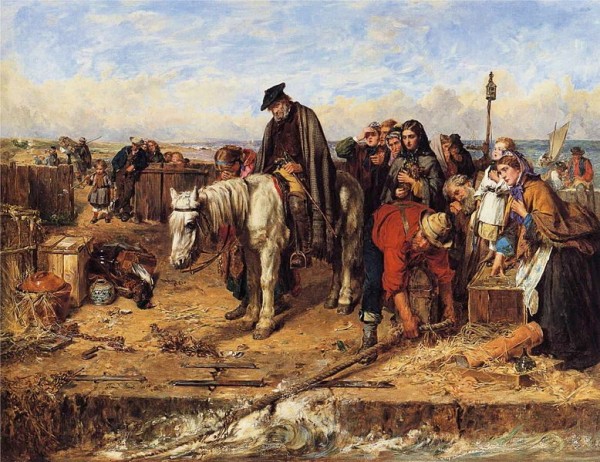
In the dramas of our everyday lives (that interpretive sociologists are so good at describing) it is often hard to see the connection to large scale economic structures. For example, it was not evident to the Scots who were expelled during the Highland clearances of the 18th and 19th centuries that their fate was tied to the transformation from feudalism to capitalism. The rise of this new economic system freed owners of land from historical responsibilities and they forced tenants off the land they had worked for generations to make way sheep production in a new form of capitalist agriculture. Yet understanding this shift is critical to understanding the not only the lives of these men and women but also the future of the Indigenous peoples of what is now known as Canada. Landless and fleeing poverty, these Scots were recruited to emigrate to the Red River settlements in Rupert’s Land (now Manitoba). To these marginalized folk it might not have been clear that they were playing an important part in a colonial process that would soon displace the Cree and Anishinabe who were gradually drawn out of their own Indigenous modes of production (hunting and gathering economies) and into the developing global capitalist economy as fur trappers and provisioners for early European settlements. It was a process that eventually led to the loss of control over their lands, the destruction of their way of life, the devastating spread of European diseases, the imposition of the Indian Act, the establishment of the residential school system, institutional and everyday racism, and an enduring legacy of intractable social problems.
In a similar way, historical materialism helps us understand how our own lives and especially the problems we face are influenced by the type of economy central to our society. From the types of career to pursue to the number of children to have, the decisions and practices of everyday life are shaped by a new form of capitalism where factory work has shifted to other parts of the world, jobs are short lived and economic inequality has grown. In this environment, a Marxist sociologist might argue, we are encouraged to not put roots down, to think firstly of ourselves, to value individuality over collective well-being.
The historical materialist approach employs a form of dialectical thinking. Dialectics in sociology proposes that social contradiction, opposition, and struggle in society drive processes of social change and transformation. Marx’s study of capitalism makes clear that owners (capitalist class or bourgeoisie) and workers (proletariat) are not simply social groups that are part of a whole but rather they have opposing interests. While owners seek to increase profits by keeping wages low and hiring as few workers as possible, workers have an interest in higher wages and better working conditions. The conflict between owners and workers, each following their interests, is what drives social change. Globalization is driven by owners seeking pools of cheap labour and workers band together to create unions and political parties to push for better working conditions, to protect their jobs and fight for a bigger share of the profits that their work creates.
Historical materialists, however, do not claim there is any inevitable direction to history, only that the internal contradictions and tensions of economic and political systems must be understood if we are to understand why and how change can happen. For example, the self-immolation of the street vender Mohamed Bouazizi in 2010 lead to the Tunisian revolution of 2011 because it “crystallized” the multitude of everyday problems endured by others in this society — unemployment, government corruption, poor living conditions, and a lack of rights and freedoms. This ‘spark’ awoke people to the shared source of what often seemed to be ‘personal troubles’ — the way that society was organized benefited a minority of those holding economic and political power handsomely, while masses suffered. While not always successful, critical sociology focuses attention on the way that people, even those with few other resources, can act together to bring about social change.
Making Connections: Sociology in the Real World
“Wanna go for a coffee?”

Meeting a friend for a cup of coffee is a common everyday event that usually passes without a great deal of sociological reflection. However, a structural functionalist like Durkheim might draw attention to how coffee shops are spaces where conversation and social connectedness are encouraged and how they play a social function that might make up for the decline in attendance at religious institutions and fraternal organizations. The consumption of caffeine might also allow for greater productivity or creativity at work.
On the one hand, this activity is also a site of social interaction of interest to a micro sociologist using symbolic interactionism. Such an approach might study how language and symbols (packaging, seating etc.) might encourage you to linger (couches and a neon ‘exhale’ sign). This approach might also study how we adapt our language and subject matter of conversation in such public spaces (do we avoid certain topics or change our language in the presence of strangers) or study how we navigate establishing new social connections (getting that phone number from a potential date).
On the other hand, if we were to take a more systematic and critical sociological view of the activity of coffee drinking, we would note how the practice also embeds us in a series of relationships to others and the environment that are not immediately apparent (Swift, Davies, Clarke and Czerny, 2004). When we purchase a cup of coffee, we enter into a relationship with the growers in Central and South America. We are involved with their working conditions and with the global structures of private ownership and distribution that make selling coffee a profitable business. We are also involved with the barista at the counter who works in the coffee shop for a living; with the fluctuations of supply, demand, competition, and market speculation that determine the price of coffee; with the marketing strategies that lead us to identify with specific beverage choices and brands; and with the modifications to the natural environment where the coffee is grown, through which it is transported, and where, finally, the paper cups and other waste are disposed of, etc.
Ultimately, over our cup of coffee, we find ourselves in the midst of a long political and historical process that is part of the formation of low wage or subsistence farming in Central and South America, the transfer of wealth to North America, and recently, various forms of resistance to this process like the fair trade movement. These relationships involve us in economic and political structures every time we have a cup of coffee.
Feminism
Another major school of critical sociology is feminism. From the early work of women sociologists like Harriet Martineau, feminist sociology has focused on the power relationships and inequalities between women and men. Inequality between the genders is a phenomenon that goes back at least 4,000 years (Lerner, 1986). Although the forms and ways in which it has been practised differ between cultures and change significantly through history, its persistence has led to the formulation of the concept of patriarchy. Patriarchy refers to a set of institutional structures (like property rights, access to positions of power, relationship to sources of income) that are based on the belief that men and women are dichotomous and unequal categories. Key to patriarchy is what might be called the dominant gender ideology toward sexual differences: the assumption that physiological sex differences between males and females are related to differences in their character, behaviour, and ability (i.e., their gender). These differences are used to justify a gendered division of social roles and inequality in access to rewards, positions of power, and privilege. The question that feminists ask therefore is: How does this distinction between male and female, and the attribution of different qualities to each, serve to organize our institutions and to perpetuate inequality between the sexes? How is the family, law, the occupational structure, religious institutions, and the division between public and private spheres of life organized on the basis of inequality between the genders?
Feminism is a distinct type of critical sociology. There are considerable differences between types of feminism, however; for example, the differences often attributed to the first wave of feminism in the 19th and early 20th centuries, the second wave of feminism from the 1950s to the 1970s, and the third wave of feminism from the 1980s onward. Despite the variations between the different types of feminist approach, there are four characteristics that are common to the feminist perspective:
- Gender differences are the central focus or subject matter.
- Gender relations are viewed as a social problem: the site of social inequalities, strains, and contradictions.
- Gender relations are not immutable: they are sociological and historical in nature, subject to change and progress.
- Feminism is about an emancipatory commitment to change: the conditions of life that are oppressive for women need to be transformed.
One of the keen sociological insights that emerged with the feminist perspective in sociology is that “the personal is political.” Many of the most immediate and fundamental experiences of social life — from childbirth to who washes the dishes to the experience of sexual violence — had simply been invisible or regarded as unimportant politically or socially. Dorothy Smith’s development of standpoint theory was a key innovation in sociology that enabled these issues to be seen and addressed in a systematic way (Smith, 1977). She recognized that the standpoint of many women, and their concerns, are grounded in their everyday lived experience in caregiving work and household labour. However, in the the the abstract world of institutional work, dealings with schools, medical systems, and government bureaucracies these concerns were “obliterated” (Smith, 1977). Much of society is organized through “relations of ruling,” which treat people and relations ‘as if’ they were abstract bureaucratic categories. Smith argued that the abstract concepts of sociology, at least in the way that sociology was taught in the 1960s and 1970s, only contributed to the problem.
Criticisms of Critical Sociology
Whereas critical sociologists often criticize positivist and interpretive sociology for their conservative biases, the reverse is also true. In part the issue is about whether sociology can be “objective,” or value-neutral, or not. However, at a deeper level the criticism is often aimed at the radical nature of critical analyses. Marx’s critique of capitalism and the feminist critique of patriarchy for example lead to very interesting insights into how structures of power and inequality work, but from a point of view that sees only the most revolutionary transformation of society as a solution.
Critical sociology is also criticized from the point of view of interpretive sociology for overstating the power of dominant groups to manipulate subordinate groups. For example, media representations of women are said to promote unobtainable standards of beauty or to reduce women to objects of male desire. This type of critique suggests that individuals are controlled by media images rather than recognizing their independent ability to reject media influences or to interpret media images for themselves. In a similar way, interpretive sociology challenges critical sociology for implying that people are purely the products of macro-level historical forces and struggles rather than individuals with a capacity for individual and collective agency. To be fair, Marx did argue that “Men make their own history;” it is just that they “do not make it just as they please; they do not make it under circumstances chosen by themselves, but under circumstances encountered, given, and transmitted from the past” (Marx, 1851).
Summary
Overall, since social reality is complex and multi-faceted, the possibility of fundamental disagreement exists between the different theoretical approaches in sociology. Is society characterized by conflict or consensus? Is human practice determined by external social structures or is it the product of choice and agency? Does society have a reality over and above the lives of individuals or are the lives of individuals the only reality? Is human experience unique because it revolves around the meanings of social action, or is it essentially no different than any other domain studied by science? The answer to each of these questions is: it is both. Similar to the problem in physics about whether light is a particle or a wave, society appears in one guise or another depending on the perspective one takes or the research tool that one adopts. Using Habermas’ schema (discussed previously), sociology takes different forms depending on whether it is to be used for the purposes of administration (e.g., positivism), mutual understanding (e.g., interpretive sociology), or social change (e.g., critical sociology). However, just like the wave/particle uncertainty in physics, the fundamental ambiguity in determining which sociological perspective to adopt does not prevent brilliant insights into the nature of social experience from being generated.
1.4. Why Study Sociology?
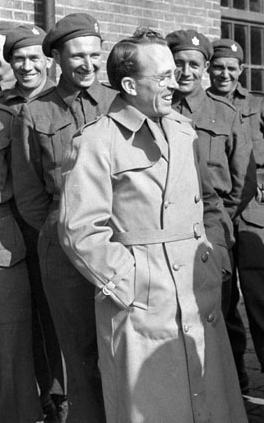
When Bernard Blishen picked up the phone one day in 1961, he was surprised to hear Chief Justice Emmett Hall on the other end of the line asking him to be the research director for the newly established Royal Commission on Health Services. Publically funded health care had been introduced for the first time in Canada that year, by a socialist Co-operative Commonwealth Federation (CCF) government in Saskatchewan, amid bitter controversy. Doctors in Saskatchewan went on strike and private health care insurers mounted an expensive anti-public health care campaign. Because it was a Conservative government commission, appointed by Prime Minister John Diefenbaker, Blishen’s colleagues advised him that it was going to be a whitewash document to defend the interests of private medical care. However, Blishen took on the project as a challenge, and when the commission’s report was published it advocated that the Saskatchewan plan be adopted nationally (Vaughan, 2004).
Blishen went on to work in the field of medical sociology and also created a widely-used index to measure socioeconomic status known as the Blishen scale. He received the Order of Canada in 2011 in recognition of his contributions to the creation of public health care in Canada.
Since it was first founded, many people interested in sociology have been driven by the scholarly desire to contribute knowledge to this field, while others have seen it as way not only to study society, but also to improve it. Besides the creation of public health care in Canada, sociology has played a crucial role in many important social reforms such as equal opportunity for women in the workplace, improved treatment for individuals with mental and learning disabilities, increased recognition and accommodation for people from different ethnic backgrounds, the creation of hate crime legislation, the right of Aboriginal populations to preserve their land and culture, and prison system reforms.
The prominent sociologist Peter L. Berger (b. 1929), in his 1963 book Invitation to Sociology: A Humanistic Perspective, describes a sociologist as “someone concerned with understanding society in a disciplined way.” He asserts that sociologists have a natural interest in the monumental moments of people’s lives, as well as a fascination with banal, everyday occurrences. Berger also describes the “aha” moment when a sociological theory becomes applicable and understood:
[T]here is a deceptive simplicity and obviousness about some sociological investigations. One reads them, nods at the familiar scene, remarks that one has heard all this before and don’t people have better things to do than to waste their time on truisms — until one is suddenly brought up against an insight that radically questions everything one had previously assumed about this familiar scene. This is the point at which one begins to sense the excitement of sociology (Berger, 1963).
Sociology can be exciting because it teaches people ways to recognize how they fit into the world and how others perceive them. Looking at themselves and society from a sociological perspective helps people see where they connect to different groups based on the many different ways they classify themselves and how society classifies them in turn. It raises awareness of how those classifications — such as economic and status levels, education, ethnicity, or sexual orientation — affect perceptions.
Sociology teaches people not to accept easy explanations. It teaches them a way to organize their thinking so that they can ask better questions and formulate better answers. It makes people more aware that there are many different kinds of people in the world who do not necessarily think the way they do. It increases their willingness and ability to try to see the world from other people’s perspectives. This prepares them to live and work in an increasingly diverse and integrated world.
Making Connections: Sociological Research
Farming and Locavores: How Sociological Perspectives Might View Food Consumption
The consumption of food is a commonplace, a daily occurrence, yet it can also be associated with important moments in our lives. Eating can be an individual or a group action, and eating habits and customs are influenced by our cultures. In the context of society, our nation’s food system is at the core of numerous social movements, political issues, and economic debates. Any of these factors might become a topic of sociological study.
A structural-functional approach to the topic of food consumption might be interested in the role of the agriculture industry within the nation’s economy and the social system as a whole. Food production is a primary example of Talcott Parsons’ function of adaptation: how human systems adapt to environmental systems. In this regard the structural-functionalist would be interested in the potential for disequilibrium in the human/environment relationship that has resulted from increases in population and the intensification of agricultural production — from the early days of manual-labour farming to modern mechanized agribusiness. In many respects the concerns of environmentalists and others, with respect to the destructive relationship between industrial agriculture and the ecosystem, are the results of a dysfunctional system of adaptation. The concept of sustainable agriculture, promoted by Michael Pollan (2006) and others, points to the changes needed to return the interface between humans and the natural environment to a state of dynamic equilibrium.
A sociologist viewing food consumption through a symbolic interactionist lens would be more interested in micro-level topics of the shared meaning of food, such as the symbolic use of food in religious rituals, the attitudes towards food in fast food restaurants, or the role it plays in the social interaction of a family dinner. This perspective might also study the interactions among group members who identify themselves based on their sharing a particular diet, such as vegans (people who do not eat meat or dairy products) or locavores (people who strive to eat locally-produced food). The increasing concern that people have with their diets speaks to the way that the life of the biological body is as much a symbolic reality, interpreted within contemporary discourses on health risks and beauty, as it is a biological reality.
A critical sociologist might be interested in the power differentials present in the regulation of the food industry, exploring where people’s right to information intersects with corporations’ drive for profit and how the government mediates those interests. Critical sociologists might also be interested in the power and powerlessness experienced by local farmers versus large farming conglomerates. In the documentary Food Inc., the plight of farmers resulting from Monsanto’s patenting of seed technology is depicted as a product of the corporatization of the food industry. Another topic of study might be how nutrition and diet varies between different social classes. The industrialization of the food chain has created cheaper foods than ever, yet with the trade-off that the poorest people in society eat the food with the least nutritional content.
Sociology in the Workplace
Employers continue to seek people with what are called “transferable skills.” This means that they want to hire people whose knowledge and education can be applied in a variety of settings and whose skills will contribute to various tasks. Studying sociology can provide people with this wide knowledge and a skill set that can contribute to many workplaces, including:
- An understanding of social systems and large bureaucracies;
- The ability to devise and carry out research projects to assess whether a program or policy is working;
- The ability to collect, read, and analyze statistical information from polls or surveys;
- The ability to recognize important differences in people’s social, cultural, and economic backgrounds;
- Skill in preparing reports and communicating complex ideas; and
- The capacity for critical thinking about social issues and problems that confront modern society (Department of Sociology, University of Alabama).
Sociology prepares people for a wide variety of careers. Besides actually conducting social research or training others in the field, people who graduate from college with a degree in sociology are hired by government agencies, nongovernmental organizations, and corporations in fields such as social services, counseling (e.g., family planning, career, substance abuse), designing and evaluating social policies and programs, health services, polling and independent research, market research, and human resources management. Even a small amount of training in sociology can be an asset in careers like sales, public relations, journalism, teaching, law, and criminal justice.
Key Terms
anomie: A social condition or normlessness in which a lack of clear norms fails to give direction and purpose to individual actions.
capitalism: An economic system characterized by private or corporate ownership and production of goods and their sale in a competitive market.
content: The specific reasons or drives that motivate individuals to interact.
critical sociology: A theoretical perspective that focuses on inequality and power relations in society in order to achieve social justice and emancipation through their transformation.
culture: Includes the group’s shared practices, values, beliefs, norms and artifacts.
dialectics: A type of analysis that proposes that social contradiction, opposition and struggle in society drive processes of social change and transformation.
disenchantment of the world: The replacement of magical thinking by technological rationality and calculation.
dominant gender ideology: The belief that physiological sex differences between males and females are related to differences in their character, behaviour, and ability.
dual consciousness: The experience of a fissure or dividing point in everyday life where one crosses a line between irreconcilable forms of consciousness or perspective.
dynamic equilibrium: A stable state in which all parts of a healthy society are working together properly.
dysfunctions: Social patterns that have undesirable consequences for the operation of society.
empiricism: The philosophical tradition that seeks to discover the laws of the operation of the world through careful, methodical, and detailed observation.
egoistic suicide: Suicide which results from the absence of strong social bonds tying the individual to a community.
feminism: The critical analysis of the way gender differences in society structure social inequality.
figuration: The process of simultaneously analyzing the behaviour of an individual and the society that shapes that behaviour.
formal sociology: A sociology that analytically separates the contents from the forms of social interaction to study the common forms that guide human behaviour.
function: The part a recurrent activity plays in the social life as a whole and the contribution it makes to structural continuity.
functionalism (functionalist perspective): A theoretical approach that sees society as a structure with interrelated parts designed to meet the biological and social needs of individuals that make up that society.
global-level sociology: The study of structures and processes that extend beyond the boundaries of states or specific societies.
historical materialism: An approach to understanding society that explains social change, human ideas, and social organization in terms of underlying changes in the economic (or material) structure of society.
interpretive sociology: A perspective that explains human behaviour in terms of the meanings individuals attribute to it.
labelling: A social process in which an individual’s social identity is established through the imposition of a definition by authorities.
latent functions: The unrecognized or unintended consequences of a social process.
macro-level sociology: The study of society-wide social structures and processes.
manifest functions: Sought consequences of a social process.
micro-level sociology: The study of specific relationships between individuals or small groups.
mode of production: The way human societies act upon their environment and its resources in order to use them to meet their needs.
multi-perspectival science: A science that is divided into competing or diverse paradigms.
paradigms: Philosophical and theoretical frameworks used within a discipline to formulate theories, generalizations, and the experiments performed in support of them.
patriarchy: Institutions of male power in society.
positive stage: A stage of social evolution in which people explain events in terms of scientific principles and laws.
positivism (positivist perspective or positivist sociology): The scientific study of social patterns based on methodological principles of the natural sciences.
quantitative sociology: Statistical methods such as surveys with large numbers of participants.
rationalization: The general tendency of modern institutions and most areas of life to be transformed by the application of instrumental reason.
Rationalism: The philosophical tradition that seeks to determine the underlying laws that govern the truth of reason and ideas.
reification: Referring to abstract concepts, complex processes or mutable social relationships as “things.”
social action: Actions to which individuals attach subjective meanings.
social facts: The external laws, morals, values, religious beliefs, customs, fashions, rituals, and cultural rules that govern social life.
social reform: An approach to social change that advocates slow, incremental improvements in social institutions rather than rapid, revolutionary change of society as a whole.
social solidarity: The social ties that bind a group of people together such as kinship, shared location, and religion.
society: A group of people whose members interact, reside in a definable area, and share a culture.
sociological imagination: The ability to understand how your own unique circumstances relate to that of other people, as well as to history in general and societal structures in particular.
sociology: The systematic study of society and social interaction.
standpoint theory: The examination of how society is organized and coordinated from the perspective of a particular social location or perspective in society.
structural functionalism: see functionalism.
structure: General patterns that persist through time and become habitual or routinized at micro-levels of interaction, or institutionalized at macro or global levels of interaction.
symbolic interactionism: A theoretical perspective through which scholars examine the relationship of individuals within their society by studying their communication (language and symbols).
theory: A proposed explanation about social interactions or society.
Verstehen: German for “understanding”; in sociology it refers to the use of empathy, or putting oneself in another’s place; to understand the motives and logic of another’s action.
Section Summary
1.1. What Is Sociology?
Sociology is the systematic study of society and social interaction. In order to carry out their studies, sociologists identify cultural patterns and social forces and determine how they affect individuals and groups. They also develop ways to apply their findings to the real world.
1.2. The History of Sociology
Sociology was developed as a way to study and try to understand the changes to society brought on by the Industrial Revolution in the 18th and 19th centuries. Some of the earliest sociologists thought that societies and individuals’ roles in society could be studied using the same scientific methodologies that were used in the natural sciences, while others believed that is was impossible to predict human behaviour scientifically, and still others debated the value of such predictions. Those perspectives continue to be represented within sociology today.
1.3. Theoretical Perspectives
Sociologists develop theories to explain social events, interactions, and patterns. A theory is a proposed explanation of those patterns. Theories have different scales. Macro-level theories, such as structural functionalism and conflict theory, attempt to explain how societies operate as a whole. Micro-level theories, such as symbolic interactionism, focus on interactions between individuals.
1.4. Why Study Sociology?
Studying sociology is beneficial both for the individual and for society. By studying sociology people learn how to think critically about social issues and problems that confront our society. The study of sociology enriches students’ lives and prepares them for careers in an increasingly diverse world. Society benefits because people with sociological training are better prepared to make informed decisions about social issues and take effective action to deal with them.
Section Quiz
1.1. What Is Sociology?
1. Which of the following best describes sociology as a subject?
- the study of individual behaviour
- the study of cultures
- the study of society and social interaction
- the study of economics
2. Wright Mills once said that sociologists need to develop a sociological __________ to study how society affects individuals.
- culture
- imagination
- method
- tool
3. A sociologist defines society as a group of people who reside in a defined area, share a culture, and who:
- interact.
- work in the same industry.
- speak different languages.
- practise a recognized religion.
4. Seeing patterns means that a sociologist needs to be able to:
- compare the behaviour of individuals from different societies.
- compare one society to another.
- identify similarities in how social groups respond to social pressure.
- compare individuals to groups.
1.2. The History of Sociology
5. Which of the following was a topic of study in early sociology?
- astrology
- economics
- physics
- history
6. Which founder of sociology believed societies changed due to class struggle?
- Émile Comte
- Karl Marx
- Plato
- Herbert Spencer
7. The difference between positivism and interpretive sociology relates to:
- whether individuals like or dislike their society.
- whether research methods use statistical data or person-to-person research.
- whether sociological studies can predict or improve society.
- all of the above.
8. Which would a quantitative sociologists use to gather data?
- a large survey
- a literature search
- an in-depth interview
- a review of television programs
9. Weber believed humans could not be studied purely objectively because they were influenced by:
- drugs.
- their culture.
- their genetic makeup.
- the researcher.
1.3. Theoretical Perspectives
10. Which of these theories is most likely to look at the social world on a micro-level?
- structural functionalism
- conflict theory
- positivism
- symbolic interactionism
11. Who believed that the history of society was one of class struggle?
- Émile Durkheim
- Karl Marx
- Erving Goffmann
- George Herbert Mead
12. Who coined the phrase symbolic interactionism?
- Herbert Blumer
- Max Weber
- Lester F. Ward
- W. I. Thomas
13. A symbolic interactionist may compare social interactions to:
- behaviours.
- conflicts.
- human organs.
- theatrical roles.
14. Which research technique would most likely be used by a symbolic interactionist?
- surveys
- participant observation
- quantitative data analysis
- none of the above
15. Which sociologist described sociology as the study of social forms?
- Martineau
- Simmel
- Weber
- Becker
1.4. Why Study Sociology?
16. Studying Sociology helps people analyze data because they learn:
- interview techniques.
- to apply statistics.
- to generate theories.
- all of the above.
17. Berger describes sociologists as concerned with:
- monumental moments in people’s lives.
- common everyday life events.
- both a and b.
- none of the above.
Short Answer
- What do you think C. Wright Mills meant when he said that to be a sociologist, one had to develop a sociological imagination?
- Describe a situation in which a choice you made was influenced by societal pressures.
- What do you make of Karl Marx’s contributions to sociology? What perceptions of Marx have you been exposed to in your society, and how do those perceptions influence your views?
- Do you tend to place more value on qualitative or quantitative research? Why? Does it matter what topic is being studied?
- Which theory do you think better explains how societies operate — structural functionalism or conflict theory? Why?
- Do you think the way people behave in social interactions is more due to the cause and effect of external social constraints or more like actors playing a role in a theatrical production? Why?
- How do you think taking a sociology course might affect your social interactions?
- What sort of career are you interested in? How could studying sociology help you in this career
Further Research
1.1. What Is Sociology?
Sociology is a broad discipline. Different kinds of sociologists employ various methods for exploring the relationship between individuals and society. Check out more about sociology: http://www.sociologyguide.com/questions/sociological-approach.php.
1.2. The History of Sociology
Many sociologists helped shape the discipline. Learn more about prominent sociologists and how they changed sociology: http://www.macionis.com/resources-for-change/profiles-of-powerful-sociologists/.
1.3. Theoretical Perspectives
People often think of all conflict as violent, but many conflicts can be resolved nonviolently. To learn more about nonviolent methods of conflict resolution check out the Albert Einstein Institution: http://openstaxcollege.org/l/ae-institution.
1.4. Why Study Sociology?
For a nominal fee, the Canadian Sociological Association has produced an informative pamphlet “Opportunities in Sociology” which includes sections on: (1) The unique skills that set sociology apart as a discipline; (2) An overview of the Canadian labour market and the types of jobs available to Sociology BA graduates; (3) An examination of how sociology students can best prepare themselves for the labour market; (4) An introduction, based on sociological research, of the most fruitful ways to conduct a job search: https://www.fedcan-association.ca/event/en/33/91.
References
Beck, Ulrich. (2000). What is globalization? Cambridge: Polity Press.
CBC. (2010, September 14). Part 3: Former gang members. The current. CBC Radio. Retrieved February 24, 2014, from http://www.cbc.ca/thecurrent/2010/09/september-14-2010.html
Durkheim, Émile. (1951). Suicide: A study in sociology. New York: Free Press. (original work published 1897)
Elias, Norbert. (1978). What is sociology? New York: Columbia University Press.
Mills, C. Wright. (2000). The sociological imagination. (40th ed.). New York: Oxford University Press. (original work published 1959)
Office of the Correctional Investigator. (2013). Backgrounder: Aboriginal offenders — A critical situation. Government of Canada. Retrieved February 24, 2014 from http://www.oci-bec.gc.ca/cnt/rpt/oth-aut/oth-aut20121022info-eng.aspx
Pollan, Michael. (2006). The omnivore’s dilemma: A natural history of four meals. New York: Penguin Press.
Simmel, Georg. (1971). The problem of sociology. In D. Levine (Ed.), Georg Simmel: On individuality and social forms (pp. 23–27). Chicago: University of Chicago Press. (original work published 1908)
Smith, Dorothy. (1999). Writing the social: Critique, theory, and investigations. Toronto: University of Toronto Press.
Statistics Canada. (2013). Overweight and obese adults (self-reported), 2012. Statistics Canada health fact sheets. Catalogue 82-625-XWE. Retrieved February 24, 2014, from http://www.statcan.gc.ca/pub/82-625-x/2013001/article/11840-eng.htm
Becker, Howard and Barnes, H. (1961). Social thought from lore to science (Vol. 1). New York: Dover Publications.
Berman, Morris. (1981). The reenchantment of the world. Ithaca: Cornell University Press
Collins, Randall and Makowsky, Michael. (1989). The discovery of society. New York: Random House.
Comte, August. (1975). The nature and importance of the positive philosophy. In Gertrud Lenzer. (Ed.), Auguste Comte and positivism: the essential writings. New York: Harper and Row. (original work published 1830)
Durkheim, Émile. (1964). The rules of sociological method. (8th ed.). In J. Mueller, E. George and E. Caitlin (Eds.) Translated by S. Solovay. New York: Free Press. (original work published 1895)
Durkheim, Émile. (1997). The rules of sociological method. In Ian McIntosh (Ed.), Classical sociological theory: A reader (pp. 207–211). New York: New York University Press. (original work published 1895)
Durkheim, Émile. (1997). Suicide: A study in sociology. In Ian McIntosh (Ed.), Classical sociological theory: A reader (pp. 212–231). New York: New York University Press. (original work published 1897)
Durkheim, Émile. (1997). Religion and society. In Ian McIntosh (Ed.), Classical sociological theory: A reader (pp. 232–247). New York: New York University Press. (original work published 1912)
Fauré, C., Guilhaumou, J., Vallier, J., and Weil, F. (2007). Des manuscrits de Sieyès, (Vols I & II) 1773–1799. Paris: Champion.
Lengermann, Patricia and Niebrugge, Jill. (2007). The women founders: Sociology and social theory, 1830–1930. Longrove, IL: Waveland Press. (original work published 1997)
Li, Peter. (1996). The making of post-war Canada. Toronto: Oxford University Press.
Marx, Karl. (1867). Capital: A critique of political economy. Hamburg: Otto Meissner Verlag.
Marx, Karl and Friedrich Engels. (1977). The communist manifesto. In David McLellan (Ed.), Karl Marx: Selected writings (pp. 221–247). Toronto: Oxford University Press. (original work published 1848)
McDonald, Lynn. (1998). Women theorists on society and politics. Waterloo: Wilfrid Laurier University Press.
Navaneelan, Tanya. (2012). Suicide rates: An overview. Health at a glance. Statistics Canada. Catalogue no. 82-624-X). Retrieved May 4, 2015 from http://www.statcan.gc.ca/pub/82-624-x/2012001/article/11696-eng.htm
Simmel, Georg. (1971). The problem of sociology. In D. Levine (Ed.), Georg Simmel: On individuality and social forms (pp. 23–27). Chicago: University of Chicago Press. (original work published 1908)
Simmel, Georg. (1971). Sociability. In D. Levine (Ed.), Georg Simmel: On individuality and social forms (pp. 127–140). Chicago: University of Chicago Press. (original work published 1910)
Simmel, Georg. (1971). Metropolis and mental Life. In D. Levine (Ed.), Georg Simmel: On individuality and social forms (pp. 324–339). Chicago: University of Chicago Press. (original work published 1903)
Statistics Canada. (2011). Women in Canada: A gender based statistical report. [PDF] (Catalogue no. 89-503-X). Retrieved January 31, 2014 from http://www.statcan.gc.ca/pub/89-503-x/89-503-x2010001-eng.pdf
Weber, Max. (1958). The protestant ethic and the spirit of capitalism. New York: Charles Scribner’s Sons. (original work published 1904)
Weber, Max. (1969). Science as a vocation. In H.H. Gerth and C.W. Mills (Eds.), From Max Weber: Essays in sociology (pp. 129-158). New York: Oxford University Press. (original work published 1919)
Weber, Max. (1997). Definitions of sociology and social action. In Ian McIntosh (Ed.), Classical sociological theory: A reader (pp. 157–164). New York: New York University Press. (original work published 1922)
Wollstonecraft, Mary. (1792). A vindication of the rights of women with strictures on moral and political subjects. London: Joseph Johnson.
Zeitlin, Irving. (1997). Ideology and the development of sociological theory. Saddle River, NJ: Prentice Hall.
Allan, Kenneth. (2006). Contemporary social and sociological theory: Visualizing social worlds. Thousand Oaks, CA: Pine Forge Press.
Becker, Howard. (1963). Outsiders : Studies in the sociology of deviance. New York: Macmillan.
Bibby, Reginald. (2012). A new day: The resilience & restructuring of religion in Canada. Lethbridge: Project Canada Books
Blumer, H. (1969). Symbolic interactionism: Perspective and method. Englewood Cliffs, NJ: Prentice Hall.
Bryant, Christopher. (1985). Positivism in social theory and research. New York: St. Martin’s Press.
Coffee Association of Canada. (2010). 2010 Canadian coffee drinking survey. About coffee: Coffee in Canada. Retrieved May 5, 2015 from http://www.coffeeassoc.com/coffeeincanada.htm.
Davis, Kingsley and Moore, Wilbert. (1944). Some principles of stratification. American sociological review, 10(2):242–249.
Drengson, Alan. (1983). Shifting paradigms: From technocrat to planetary person. Victoria, BC: Light Star Press.
Durkheim, Émile. (1984). The division of labor in society. New York: Free Press. (original work published 1893)
Durkheim, Émile. (1964). The rules of sociological method. J. Mueller, E. George and E. Caitlin (Eds.) (8th ed.) S. Solovay (Trans.). New York: Free Press. (original work published 1895)
Goffman, Erving. (1958). The presentation of self in everyday life. Edinburgh: University of Edinburgh, Social Sciences Research Centre.
Habermas, Juergen. (1972). Knowledge and human interests. Boston: Beacon Press.
Herman, Nancy J. and Larry T. Reynolds. (1994). Symbolic interaction: An introduction to social psychology. Lanham, MD: Altamira Press.
LaRossa, R. and D.C. Reitzes. (1993). Symbolic interactionism and family studies. In P. G. Boss, W. J. Doherty, R. LaRossa, W. R. Schumm, and S. K. Steinmetz (Eds.), Sourcebook of family theories and methods: A contextual approach (pp. 135–163). New York: Springer.
Lerner, Gerda. (1986). The Creation of patriarchy. New York: Oxford University Press.
Marcuse, Herbert. (1964). One dimensional man: Studies in the ideology of advanced industrial society. Boston: Beacon Press.
Martineau, Harriet. (1837). Society in America (Vol. II). New York: Saunders and Otley. Retrieved February 24, 2014 from https://archive.org/details/societyinamerica02martiala
Maryanski, Alexandra and Jonathan Turner. (1992). The social cage: Human nature and the evolution of society. Stanford, CA: Stanford University Press.
Marx, Karl. (1977). Theses on Feuerbach. In David McLellan (Ed.), Karl Marx: Selected writings (pp. 156–158). Toronto: Oxford University Press. (original work published 1845)
Marx, Karl. (1977). The eighteenth Brumaire of Louis Bonaparte. In David McLellan (Ed.), Karl Marx: Selected writings (pp. 300–325). Toronto: Oxford University Press. (original work published 1851)
Marx, Karl. (1978). For a ruthless criticism of everything existing. In R. C. Tucker (Ed.), The Marx-Engels reader (pp. 12–15). New York: W. W. Norton. (original work published 1843)
Mead, G.H. (1934). Mind, self and society. Chicago: University of Chicago Press.
Naiman, Joanne. (2012). How societies work (5th ed.). Black Point, Nova Scotia: Fernwood Publishing.
Parsons, T. (1961). Theories of society: Foundations of modern sociological theory. New York: Free Press.
Schutz, A. (1962). Collected papers I: The problem of social reality. The Hague: Martinus Nijhoff.
Smith, Dorothy. (1977). Feminism and Marxism: A place to begin, a way to go. Vancouver: New Star Books.
Spencer, Herbert. (1898). The principles of biology. New York: D. Appleton and Company.
Swift, J., Davies, J. M., Clarke, R. G. and Czerny, M.S.J. (2004). Getting started on social analysis in Canada. In W. Carroll (Ed.), Critical strategies for social research (pp. 116–124). Toronto: Canadian Scholars’ Press.
Weber, Max. (1997). Definitions of sociology and social action. In Ian McIntosh (Ed.), Classical sociological theory: A reader (pp. 157–164). New York, NY: New York University Press. (original work published 1922)
Berger, Peter L. (1963). Invitation to sociology: A humanistic perspective. New York: Anchor Books.
Department of Sociology, University of Alabama. (n.d.). Sociology: Is sociology right for you?. Huntsville: University of Alabama. Retrieved January 19, 2012 from http://www.uah.edu/la/departments/sociology/about-sociology/why-sociology
Vaughan, Frederick. (2004). Aggressive in pursuit: The life of Justice Emmett Hall. Toronto: University of Toronto Press.
Solutions to Section Quiz
1 C, | 2 B, | 3 A, | 4 C, | 5 B, | 6 B, | 7 C, | 8 A, | 9 B, | 10 D, | 11 B, | 12 A, | 13 D, | 14 B, | 15 B, | 16 D, | 17 C [Return to Quiz]
Image Attributions
Figure 1.1 Canada Day National Capital by Derek Hatfield (http://commons.wikimedia.org/wiki/File:Canada_Day_National_Capital.jpg) used under CC BY 2.0 (http://creativecommons.org/licenses/by/2.0/deed.en)
Figure 1.2. Il (secondo?) bacio più famoso della storia: Vancouver Riot Kiss by Pasquale Borriello (https://www.flickr.com/photos/pazca/5844049845/in/photostream/) used under CC BY 2.0 (https://creativecommons.org/licenses/by/2.0/)
Figure 1.4 “Native Pride” (photo courtesy of Rap Dictionary http://62.193.220.29/Native_syndicate)
Figure 1.5c Ibn Khaldun by Waqas Ahmed (http://commons.wikimedia.org/wiki/File:Ibn_Khaldun.jpg) used under CC BY-SA 3.0 (http://creativecommons.org/licenses/by-sa/3.0/deed.en);
Figure 1.6. Newton-WilliamBlake by William Blake (http://en.wikipedia.org/wiki/Newton_(Blake)#mediaviewer/File:Newton-WilliamBlake.jpg) is in the public domain (http://commons.wikimedia.org/wiki/Public_domain#Material_in_the_public_domain)
Figure 1.7 Auguste Comte (https://commons.wikimedia.org/wiki/File:Auguste_Comte.jpg) is in public domain
Figure 1.9. Harriet Martineau portrait (http://en.wikipedia.org/wiki/File:Harriet_martineau_portrait.jpg) is in the public domain (http://commons.wikimedia.org/wiki/Public_domain#Material_in_the_public_domain).
Figure 1.10. Emile Durkheim (http://en.wikipedia.org/wiki/File:Emile_Durkheim.jpg) is in the public domain (http://commons.wikimedia.org/wiki/Public_domain#Material_in_the_public_domain).
Figure 1.11. Chalice Silver with gilding depicting a youthful Christ with cruciform halo and saints Byzantine (https://www.flickr.com/photos/mharrsch/1293596797/in/photolist-2Yj2g4-2YpXJf-gdV8N-Lb7Ub-LbmSB) used under CC BY-NC-SA 2.0 (https://creativecommons.org/licenses/by-nc-sa/2.0/)
Figure 1.12. Max Weber (http://en.wikipedia.org/wiki/File:Max_Weber_1917.jpg) is in the public domain (http://commons.wikimedia.org/wiki/Public_domain#Material_in_the_public_domain).
Figure 1.13. Georg Simmel by Julius Cornelius Schaarwächter (http://commons.wikimedia.org/wiki/File:Georg_Simmel.jpg) is in the public domain (http://commons.wikimedia.org/wiki/Public_domain#Material_in_the_public_domain).
Figure 1.15. Blindmen by MIke Kline (https://www.flickr.com/photos/mikekline/2323060908/in/photolist-7vGvbq-pXMvrb-bKPeXv-ecsGfu-gokfXF-88zx4V-trwkLL-z5bZF-4wohCG-4wj8Vn-4wj91H-4xhi9m-4xh3NU-4xh3NE-4xh3NA-4xh3Nw-4xd6GV-4xhi5h-4xh3NJ-5WEat9-8ENGbj) used under CC BY 2.0 (https://creativecommons.org/licenses/by/2.0/)
Figure 1.16. The Last of the Clan by Thomas Faed (http://commons.wikimedia.org/wiki/File:Thomas Faed-The_Last_of_the_Clan.JPG) is in the public domain (http://commons.wikimedia.org/wiki/Public_domain#Material_in_the_public_domain).
Figure 1.19. Hon. T.C. Douglas, Premier of Saskatchewan by Lieut. G. Barry Gilroy (http://en.wikipedia.org/wiki/File:Tommycropped.jpg) is in public domain.
Long Descriptions
Figure 1.16 Long Description: The Highland Clearances: A painting of men, women, and children looking upset and weary and surrounded by their belongings next to the ocean. Return to Figure 1.16
| Normative | Conflictual | |
|---|---|---|
| Structure | Comte’s Positivism and Durkheim’s Structural Functionalism | Foucault’s Poststructuralism |
| Agency | Weber’s Interpretive Sociology and Mead’s Symbolic Interactionism | Martineau’s Feminism and Marx’s Critical Sociology |
| [Return to Figure 1.18] | ||

